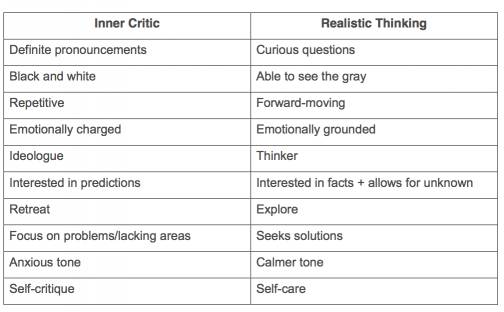
Up until I was about 30, I didn't know I had "an inner critic." Yes, I had heard the term here and there. Yes, I was mildly aware that sometimes cruel words about myself chattered away in my head, but that was it. Meanwhile, my inner critic was keeping me from writing, from dancing, from risking, from creating the career I really wanted.
I wasn't alone. Most women and girls are profoundly held back by their inner critics -- but they often don't know it and they certainly haven't been given the tools to do anything about it. I've become passionate about every woman and girl on the planet getting an Inner Critic 101 Training -- the basic knowledge about what the critic is and what we can do to quiet its voice.
Today, I want to focus on one particular aspect of quieting the critic that we talk about in my Playing Big program: waking up to the difference between the inner critic and good old realistic thinking. Take a look at the chart below:

Get the idea?
The inner critic is into making definite pronouncements and predictions: "You look horrible." "You could never pull off starting a business like that." "Your painting is not as good as all the others in the class."
The realistic thinker in us -- when untarnished by the influence of the critic -- asks curious questions: "Hmmm, could I do it? Do I have skill x and y that it takes, or do I need to build those skills?" "What is remarkable about this painting? What is lacking?"
The realistic thinker is forward moving. She seeks solutions. Bring the realistic thinker to bear when thinking about a career change, for example, and she'll critically assess risks and potential costs, but with a focus on minimizing them and resolving them. The critic will spin and spin, ruminating on the risks and costs. In other words, the realistic thinker generates a true "line of thinking" -- a line that lands in a different, more thought-out place than where it started. Something was created - a plan, a more nuanced understanding, a set of more specific questions to explore -- through the thinking.
And then there's the tone. The critic speaks in an anxious, emotionally charged tone. The realistic thinker doesn't sound stern, like you might have been taught she did. The true realistic thinker in all of us just sounds grounded. Clear-eyed. Calm.
Just take that in for a minute, because I know that is very different than what you've likely been taught. It makes me cry a little to sit with that, because inside me there is a tender little girl who was told that "realistic thinking" was something very different, and ever since she thought she had to succumb to talking to herself in that way.
Realistic thinking is actually light, inquisitive, exploratory, and highly creative.
What does all this mean for you, today?
You can stop confusing realism with negativity, realistic thinking with the inner critic.
You can reclaim that inquisitive, calm, solution-seeking realistic thinker in you.
Even if you aren't sure you've got her in there, she'll start showing up, now that you have put your attention on her. Just look for her, a little inside, and invite her to the table. Ask her to come to the fore.
Love,
Tara
If you'd like to read more about the Inner Critic vs. Realistic Thinking you can check out Tara's blog HERE.
Tara Sophia Mohr is an expert on women's wellbeing and leadership. A coach, writer and teacher, she is the creator of the global Playing Big leadership program for women. Visit here to get Tara's free guide, the 10 Rules for Brilliant Women Workbook.